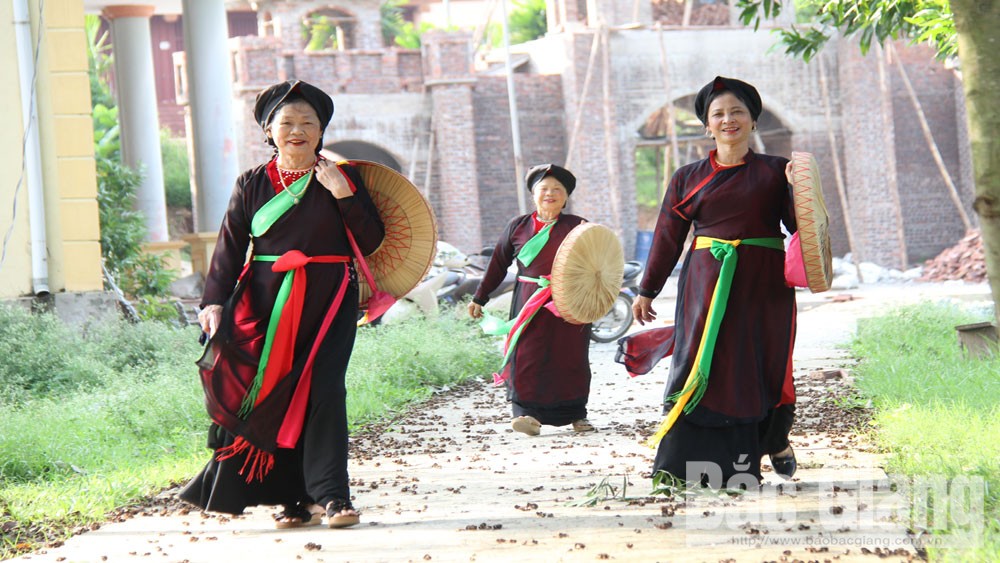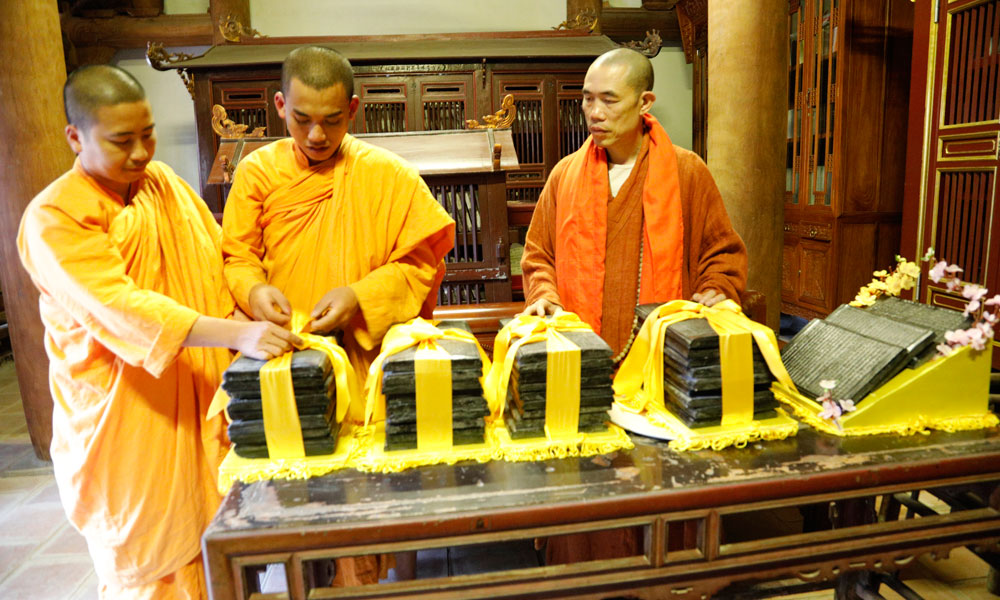The charm of Tam Tang ‘quan ho’ singing
I have seen many male and female ‘quan ho’ vocalists from Tam Tang performing at the 11th traditional ‘Quan ho’ Singing Festival of Viet Yen district in 2011 at Bo Da pagoda. The deep folk songs really impressed the audience and that year Tam Tang village won the first prize.
 |
|
Female ‘quan ho’ singers in Tam Tang village. |
In a recent visit to Tam Tang, we met those male and female ‘quan ho’ singers wearing “Ao tu than (four-panel traditional dress), “Non quai thao” (flat palm hat), and “khan mo qua” (a scarf to cover the hair) gracefully and singing popular melodies such as: Moi nuoc moi trau (Inviting guests to enjoy water and betel), Khach den choi nha (When guests come), Gia ban (Goodbye to friends)... with soaring lyrics and rhymes.
Singer Nguyen Thi Lai, 59, Secretary of the village Party cell and head of the village ‘quan ho’ club, said Tam Tang boasts a long tradition of singing ‘quan ho’, with the previous generations teaching the art to the next ones.
The club currently has 25 members of different ages and professions, but they all have in common: passion for ‘quan ho’. There are old people at the age of 70 and 80 who still enthusiastically participate in the club’s activities, contributing to teaching and encouraging young people to learn the folk songs.
Founded in 1998, the Tam Tang ‘quan ho” singing club has obtained many achievements and regularly maintained two practising sessions a week. Since 2000, the club has competed in the provincial ‘quan ho’ singing contest 19 times, winning high prizes every year.
Lai further said that some old people nearly 80 years of age are still passionate about the traditional art of the homeland, actively engaging in teaching and performing ‘quan ho’. For example, 79-year-old Le Thi Hao, although her voice is not as smooth as before, still remembers and sings many ancient melodies such as: Cai hoi cai a, Doi ben bac me cung gia (Both parents and parents-in-law are old) and Len nui Ba Vi (Climbing to Ba Vi Mountain)...
According to Hao, before the August Revolution in 1945, Tam Tang village belonged to Nam Ngan village. In the past, the ancient ‘quan ho’ villages used to sing to make friends, including the male and female sides. From those songs, relationships were set up. The villages became friends to help each other in daily life and production.
Nam Ngan ‘quan ho’ village in Quang Chau commune had a close relationship with Phuc Lam village (Hoang Ninh), while about 80 percent of Tam Tang village's population are originally from Nam Ngan. Therefore, Tam Tang and Phuc Lam villages have always considered each other brothers, with close relations. Both have maintained the unique culture on the northern bank of the Cau River.
Quang Chau commune has a vibrantly developing cultural and arts movement. In particular, the Tam Tang ‘quan ho’ singing club has actively joined performances with clubs in Bac Ninh and Hanoi. For the members of the club, ‘quan ho” singing is not only for competition to earn prizes but also creates a playground to interact, meet and dispel tiredness in life. As female vocalist Lai said "They are just “home-made" performances but enough to make the spiritual life more interesting”.
The enthusiasm and passion for ‘quan ho’ singing of male and female singers here have contributed to preserving and spreading ‘quan ho’ on the land of Kinh Bac, making it worthy of being an cultural heritage of humanity as honoured by UNESCO.
Anh Khoa
 Bắc giang
Bắc giang
















Reader's comments (0)